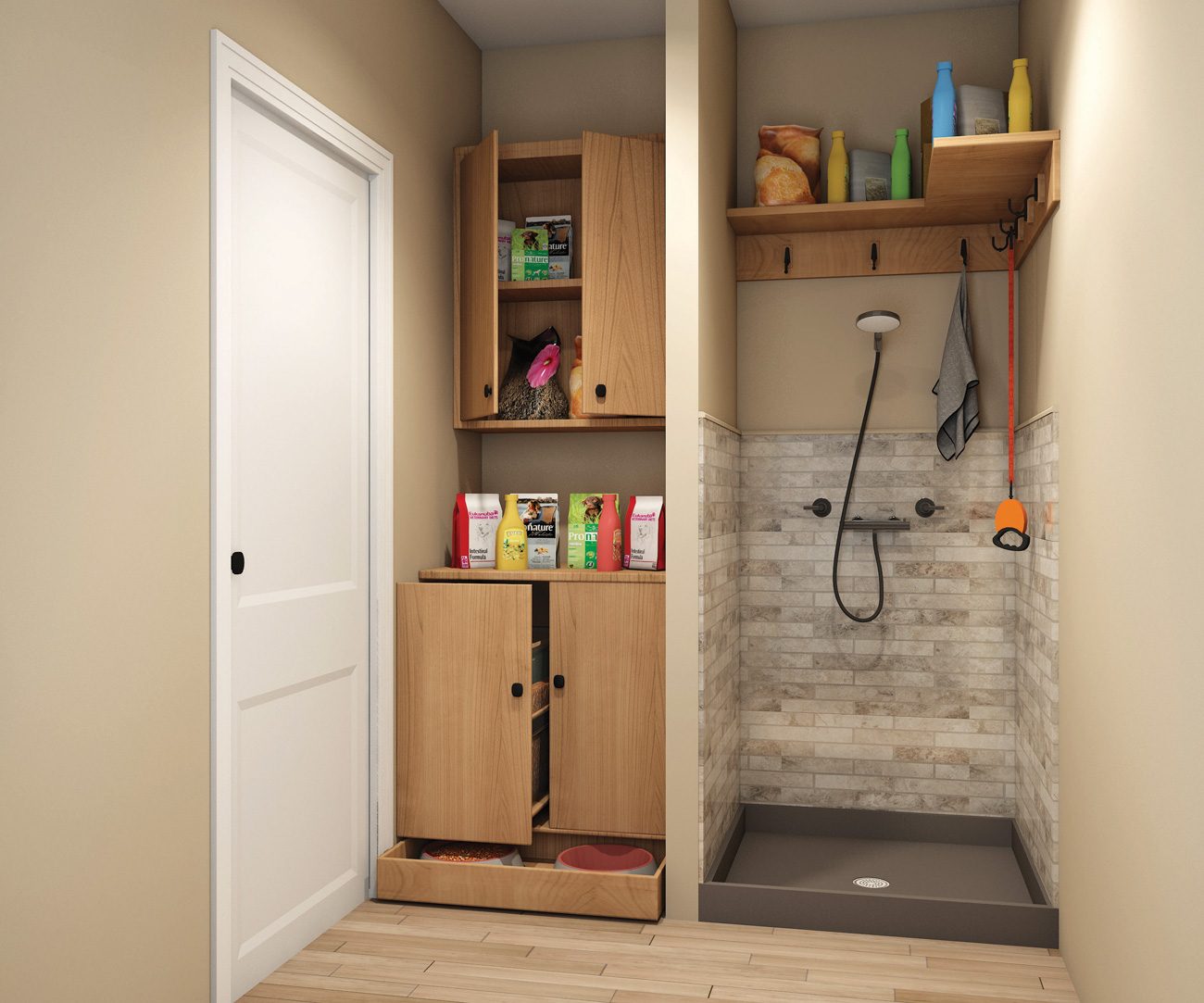From family and jobs to finances and health, life can get complicated. “Zen is in demand,” as one real estate pro says. Learn how you can provide that.
Whether it’s a luxurious $45 million estate in California or a modest $250,000 two-bedroom house in Ohio, marketing a home’s stress-relieving qualities is a growing trend. Today, developers, builders, and interior designers are trying to make homes that offer that soft landing at the end of a day. And homeowners need it—about eight in 10 Americans say they frequently (44 percent) or sometimes (35 percent) encounter stress in their daily lives, according to a recent Gallup poll.
Helping clients find a soothing place to come home to can become a niche in the real estate world. And, understanding what stress-relieving designs are available can help you and your agents guide clients to a happy purchase.
Reaching Female Homebuyers
Since 2003, Design Basics Inc., in Omaha, has been gearing many of its residential blueprints toward easing stress because that is one of the four important elements women look for in a home’s design. Why women, you ask? Well, 91 percent of home purchases are influenced by women, according to the Harvard Business Review. Additionally, the National Association of REALTORS® 2018 Profile of Home Buyers and Sellers found that the number of single female buyers continues to rise, and are currently the second largest buyer group at 18 percent behind married couples at 63 percent.
Paul Foresman, director of business development for Design Basics, says the company took data and research on female buyers of all ages and backgrounds and created the Woman-Centric Matters home design program. They discovered the four primary elements women are looking for in home design: entertainment, stress relief, storage, and flexible living. Foresman travels across the country talking to builders about the program.
“Everyone lives differently. But women tell us that they want to come into their home and feel like it is a place of respite. They look for homes that make their life easier, more convenient, more fun, and more inviting to others,” he adds.
The High End of Less Stress

Home designs by Greg Malin, CEO and founder of Troon Pacific in San Francisco, are adding amenities such as lap pools with underwater speakers that play music and art galleries with chaise lounges so you can take it all in.
“What’s the best luxury in life? My late wife would say it’s your health,” Malin says. So, he builds homes with his passion for sustainability and wellness in mind. Less stress in a person’s world can help with their health. For instance, cables in all bedrooms of his homes are shielded to mitigate electromagnetic field waves, which can cause the body to emit stress signals that can lead to high levels of adrenaline.
His company also uses biophilic design, which bridges a homeowner’s lifestyle with natural environment around them. “We’re trying to connect people to nature. One of our homes offers a yoga deck. Plus, each [development] project offers a wellness center with a sauna, steam room, a place to have a massage, meditation area, and outdoor shower,” he adds.
Joel Goodrich, agent at Colwell Banker Preview International in San Francisco, has shown Malin’s stress-free homes several times to clients. He also is a friend of Malin. “Perhaps, we are living in more stressful times than ever before. People are looking for their homes to be an oasis or retreat from life, the world, and business,” he says. “These homes are designed to feel like a retreat. Zen is in demand.”
Tips for Alleviating Stress at All Price Points
Most home buyers are looking for respite in a haven from everyday stress. The good news is not all stress-free homes have to be multimillion-dollar properties. Here are some of the stress-reducing designs and products being showcased in homes across the country.
Natural light, plus dimmers. “People always gravitate to the bright, sunny spaces in a home. So, anything we can to do enhance natural light is popular,” Foresman says. Malin adds that lights with dimmers can also help reduce harshness, especially in bedrooms, for a more relaxing ambiance.
Automated shades. Shades programed to open at sunrise can be a calming way to wake up without an alarm. They can also be used to reduce sunlight for those not ready to rise, Goodrich says. In addition to setting times, homeowners can pair smart shades with a digital thermostat, so they automatically open and close based on temperature.
A water feature. “Water can be very calming,” Goodrich says. In one extreme example, an international architect put a waterfall in the middle of a living room design and branded it. But a simple fountain in a sun porch or patio can do wonders, too, he adds.

Pet centers. Many buyers nowadays are seeking pet-friendly abodes, so features such as cabinets with pullout drawers for dog food goes a long way. Some want a dog washing station or a room for the pet itself. Electronic doggie doors have also become popular, where the dog has a collar that automatically opens the door to go inside or out.
Nature’s beauty. The ability to see flowers or greenery outside your windows—even in a big city—helps create peacefulness. In Malin’s homes, he plants green rows of bamboo or cypress outside the main windows, even in the heart of the Bay Area.
Covered outdoor living space. Foresman says you don’t have to cancel your plans if it rains when you have a covered outdoor area, which eliminates worry. Plus, coffee on the patio can still happen on rainy mornings. A pergola cover or easy-to-assemble patio gazebo are cost-effective ways to accomplish this.
Work-in pantry. Taking the walk-in pantry to the next level, some buyers want a prep area, sink, dishwasher, and sometimes an oven in what’s dubbed the “work-in” pantry, Foresman says. This eliminates guests seeing any mess while keeping the heart of the gathering in the kitchen.
Relaxing sounds and white noise. Malin installs speakers in master bedrooms and bathrooms, allowing for the sounds of waterfalls, forests, or whatever keeps the homeowners tranquil. For existing homes without built-in speakers, try a Google Home or Amazon Echo—relaxing sounds at open houses may even entice buyers.
Shipping vestibule. This involves a door or cupboard that opens for delivery people. They can leave the package behind the door without entering the house, Foresman says. You don’t have to be home when the delivery is dropped off, and locks can used from your smartphone to avoid theft.
Dual owner suites. This newer building plan has quickly become Foresman’s top seller. It includes two suites on the main floor that can be used for older couples who don’t sleep in the same bed, multigenerational households, boomerang kids, friends who have purchased together, or live-in caregivers. “In many ways for all involved it’s a great stress reliever, with a private bathroom and enough storage,” he adds.
“Copyright National Association of REALTORS®. Reprinted with permission.”


